The estuary is home to more than 160 species of birds, 308 species of plants, 87 species of fish and 20 different species of amphibians and reptiles. Among these, 16 species are considered critical elements– species of flora and fauna that are rare and unique to Puerto Rico and vulnerable or in danger of extinction. These include birds like the yellow-shouldered blackbird, the palometa, and the peregrine falcon; the stahlia tree (árbol de la cobana negra); and several reptiles like the leatherback sea turtle and the hawksbill turtle, who use the sandy beaches of the Vacía Talega-Piñones area to deposit their eggs during the reproductive season. About 300 species of wetland plants also live on the estuary.
The Estuario de la Bahía de San Juan Program sponsors a bird census every year, known as the Censo de Aves Navideño Gamaliel Pagán Hernández. The data obtained is used to study the patterns and population dynamics of the birds that have lived on the EBSJ through history.
Birdwatching is the fastest growing recreational activity in the world and represents a $25,000 million industry every year in the United States, Canada, and Mexico. The estuary, with more than 160 reported bird species, fosters the development of this industry, particularly during the winter. Winter is the season where most birds are observed and coincides with the tourist season on our island. The success of this industry depends on the management and conservation of our natural resources.
Fish at the EBSJ also have significant economic and recreational importance, particularly the catch-and-release fishing for tarpon at the Laguna San José. This type of fishing consists of capturing fish then releasing them back to their habitat without harm. More than 1,200 tourists a year visit Puerto Rico specifically to enjoy this sport in the EBSJ. Fishing as a sport in the EBSJ can contribute around $1.5 million annually to the local economy.
WILDLIFE
Wildlife is a defining component of this great ecosystem that human beings share. Unfortunately, consciously or unconsciously, we degrade and/or destroy wildlife habitats through pollution and other disturbances related to our daily lives. These are some of the main causes of negative impact on the diversity and abundance of flora and fauna species.

More than 160 species of birds, 124 species of fish, and 19 species of reptiles and amphibians have been observed or identified in the region of the Estuario de la Bahía de San Juan.
The destruction and degradation of habitats, pollution, and other disturbances related to humans are some of the main causes that affect the diversity and abundance of species.
Many of the actions in our Comprehensive Management Plan are geared towards improving and maintaining this ecosystem. Our goal is the optimal sustainability of the flora and fauna, while allowing for the recreational use of our resources.

There are more than 300 species of wetland plants in the estuary. These extend throughout the coastal, aquatic, and marine habitats.
The following describe the four species of mangroves that grow on the estuary:
- The red mangrove (Rhizophora mangle) is found along the shoreline of the bay and canals of the estuary. The seed germinates in a seedling when it is still on the tree.
- The black mangrove (Avicennia germinans) contains structures known as pneumatophores, which acquire oxygen directly from the atmosphere.
- The white mangrove (Laguncalaria racemosa) and the button mangrove (Conocarpus erectus) are other species found in the estuary
Mangroves provide many benefits to the estuary including protection of the coast against waves and erosion and a place for food, mating, nesting, and rest for birds, crustaceans, and reptiles.

The introduction of exotic species—which eventually become invasive and harmful—is considered one of the biggest threats to world biodiversity. This is due to invasive species competing for space and food and, in some cases, preying on native species.
The EBSJ has identified three invasive species related to aquatic ecosystems. These are the green iguana or “gallina de palo” (Iguana iguana), caiman (Caimán cocrodilus) and lionfish (Pterois volitans).
In order to control these invasive species, the EBSJ leads specific action aimed at:
- Identification of the areas on the EBSJ where the impact of these invasive species has been observed and documented.
- Development and implementation of control strategies for the invasive species.
- Implementation of educational campaigns about the impact to the native fauna.
Through the implementation of these actions, we can eventually have healthy estuarine ecosystems that are resilient to climatic change.
HABITAT
Some of the ecosystems in the estuary are mud, swamp, mangroves, sea grass, coral communities, and sandy beaches. They are home to rich and diverse biological communities.

The herbaceous wetlands or swamps provide a habitat that is critical to breeding for a great variety of fish and invertebrate species. They are also areas that provide food and nesting for a wide variety of birds. One of the most important herbaceous wetlands in the estuary is the Ciénaga Las Cucharillas, located in the municipality of Cataño.

The largest mangrove forest in Puerto Rico is located on the EBSJ, and it is part of the Natural Reserve of the Piñones State Forest.
The mangrove is a tree that protects the coast from strong waves, keeps the water clean, promotes fishing, is a source of medicine, allows for the development of coral reefs and simultaneously sustains a variety of birds and other creatures. In addition, they also control flooding and promote recreational and scientific activities.
Of particular importance is the red mangrove (Rhizophora mangle) which lives on the border between land and water. The submerged roots of the red mangrove provide one of the most important and interesting habitats known in the aquatic world. In fact, it is considered the nursery of the tropical seas. More than 80% of the fish that live in coral reefs and other deep-sea environments spend their youth protecting and feeding themselves between the mangrove’s roots. In this way, mangroves sustain a great diversity of species and benefit tropical sea fishing.
Mangroves also improve the quality of the water on the coast as their roots act as natural traps for sediment. They also immobilize contaminants such as pesticides and excessive nutrients before they reach the ocean. By improving the quality of the water on the coast, mangroves allow for the development of communities such as coral reefs and marine grasslands that depend on clear water to live. In addition to retaining sediment, they act as a buffer against strong waves and protect the coast from erosion. For example, the energy of one wave can be reduced 75% when coming through a 200-meter border of mangroves.
The lack of awareness about the benefits that mangroves provide resulted in the Joint Resolution Number 7 of May 13, 1927, which authorized the government of Puerto Rico to sell mangroves to be dried because they were considered «highly damaging to health, breeding sites for mosquitoes, and consequently sources of malaria and other diseases and unproductive land.» After 78 years, mangroves were finally recognized for their benefit. Law 60 from August 20, 2005, revoked that previous resolution.
Aware of the importance of the mangroves, the Estuario de la Bahía de San Juan Program, with the collaboration of volunteers and other allies, have planted more than 3,000 seedlings of red mangrove in areas where they were destroyed, such as in the Laguna del Condado and Península La Esperanza in Cataño.

Seagrasses are aquatic plants that grow flowers and form extensive meadows above the seabed. They provide habitat for many fish that are important to the economy and for recreation, as well as food for endangered species.

Coral communities and their habitats are mainly found on the entrance to the ocean in the San Juan Bay and Laguna del Condado– the lagoon with the greatest biodiversity in the estuary system.
In order to improve aquatic communities, the Estuario de la Bahía de San Juan Program placed 45 modules of artificial coral reefs at the bottom of the Laguna del Condado. These modules known as “Taíno Reefs” imitate the coral reef’s structures to create new habitats in the ocean. After six months, the first coral colonies were observed; in nine months the amount and diversity of fish had increased.
Nature is going through a critical phase and needs our help to conserve and protect it. With the appropriate and careful use of technology, we can foster conditions that allow nature to restore itself, even though we will never be able to substitute its processes.

The estuary’s sandy beaches are found on the Península La Esperanza, the eastern shore of Isla de Cabras, La Puntilla, Laguna del Condado, Ocean Park, Isla Verde, Piñones, and Vacía Talega. These are one of the most important resources for the tourism industry and public recreation.

Dunes are large accumulations of sand on the beach that work as a barrier to protect us from the strong ocean waves. They store the sand then release it to form the beaches that we love. Without dunes, we wouldn’t have beaches!
Considered coastal ecosystems, dunes act as shelter and a source of food for plants and creatures like the hermit crab. Some of the plants found in the dunes are the beach grape (Coccoloba uvifera), beach vine (Ipomea sp.) and salt herb (Spartina). These plants are very important for the dunes since they trap the sand that flows in with the wind and increase its accumulation.
The Estuario de la Bahía de San Juan Program organizes and implements projects to restore and create dunes in different parts of the metropolitan coast. These projects involve the placement of systems to contain the sand as well as planting coastal vegetation such as the beach vines (Ipomea), beach grapes (Coccoloba uvifera) and salt herbs (Spartina).
These efforts are done in partnership with the residents of neighboring communities and include citizen scientists who contribute much dedication and time. They are the true heroes of the restoration.

The trees on the estuary refresh the environment by providing shade, reducing the use of fossil fuels needed to operate home or office air conditioner systems.
- A large tree by a house is equivalent to 10 air conditioners turned on for 20 hours a day.
- Planting trees around buildings reduces the use of air conditioners by 30%.
- Recent studies reveal that a mature tree eliminates 48 pounds of carbon dioxide (CO2) in one year.
- A mature tree produces 260 pounds of oxygen a year.
- A large tree produces all the oxygen that two people need.
- Trees filter air contaminants and clean the waters in the city.
Trees also beautify the environment, provide habitat for wildlife, and reduce city noise.
We encourage you to browse through our website to learn everything that the unique and wonderful natural resource of the Estuario de la Bahía de San Juan provides, as well as all the efforts for its restoration, protection, and maintenance that we provide.


